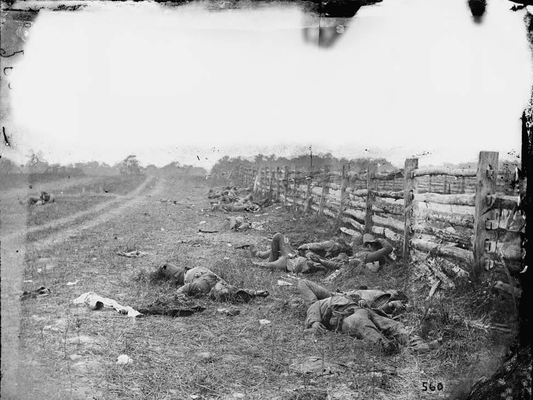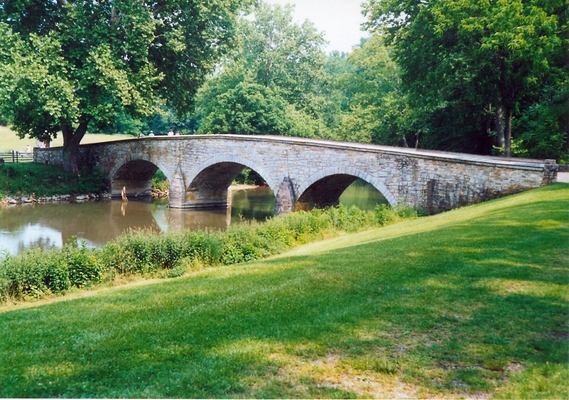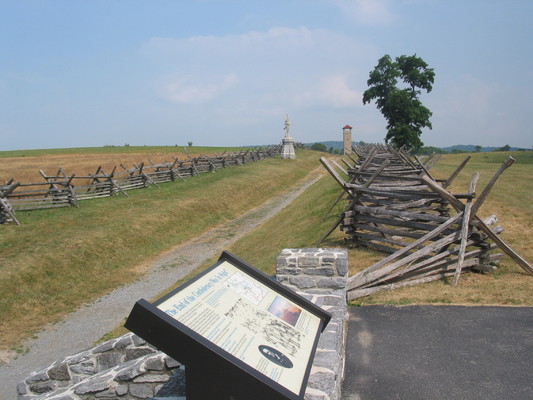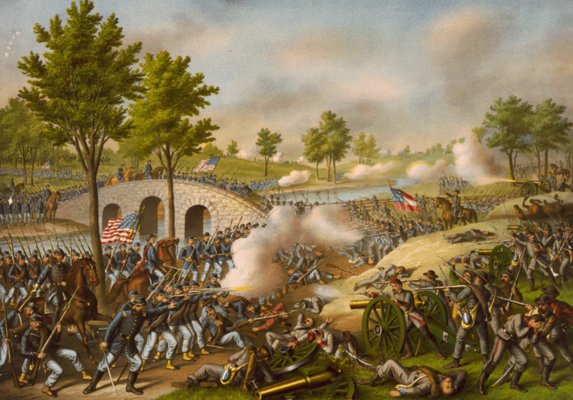
by Erin Wayman Thursday, January 5, 2012

Nearly 23,000 men died in the Battle of Antietam, including these Confederate soldiers. Library of Congress - Alexander Gardner

In the Battle of Antietam, there were fewer casualties near Burnside Bridge, pictured here, than at the Cornfield. Ernest Mettendorf

Thousands of men died along Sunken Road, or "Bloody Lane," during the Battle of Antietam. Stephen Kellam

Antietam Library of Congress - Kurz and Allison
In the waning days of summer 1862, Gen. Robert E. Lee lined his Confederate troops along a grassy ridge on the western side of Antietam Creek in the outskirts of Sharpsburg, Md.
Across the stream, Union troops prepared for an attack.
Then, on Sept. 17, in the shadow of the Blue Ridge Mountains, the Battle of Antietam began. The armies blasted each other with gunfire from dawn until nearly dusk. That day proved to be the single bloodiest day of the American Civil War, with more than 23,000 men lying dead or wounded in the valley’s fields by nightfall.
But in addition to the bullets and cannonballs, soldiers in both armies had another common enemy that day: carbonate rock.
Antietam’s landscape is carved from several types of carbonate. In fact, many of the Civil War’s bloodiest battles were fought on terrain formed from the sedimentary rock. And geologists Robert Whisonant and Judy Ehlen of Radford University in Virginia say that’s not just a coincidence.
The pair has spent the past decade exploring the geology of Civil War battlefields. In their most recent work, they compiled a list of the war’s 25 bloodiest battles, measured in terms of casualties per day of fighting and percentage of soldiers who were killed or wounded during combat. After plotting the battles on a geologic map, they noticed a trend: A quarter of the battles were waged on carbonate landscapes. The rest were scattered across a variety of geological settings. Battles on carbonate bedrock also had above-average numbers of casualties.
That got them thinking: Carbonate is a soft rock that erodes easily. In a humid environment like the eastern United States, millions of years of rain will whittle down carbonate formations, often creating relatively flat, open terrain. Open terrain is a soldier’s worst nightmare. When advancing soldiers lack hills or ridges to use as cover, they are an easy target for distant artillery.
Even across Antietam’s battlefield, differences in carbonate geology affected how soldiers fared in the battle, Whisonant and Ehlen say. Casualties were at least three times higher in a section of the battlefield known as the Cornfield, which sits atop nearly pure limestone, compared to an area farther east near Burnside Bridge, where the bedrock is a mix of limestone, shale and dolomite. Limestone dissolves more easily than shale or dolomite, and thus it weathers more easily too. In the Cornfield, the ground was worn nearly flat. Near Burnside Bridge, however, the limestone, shale and dolomite weathered to differing degrees, creating an uneven, rolling terrain with hills and ridges that provided soldiers with good places to hide.
“Open ground being more dangerous for soldiers may not be news, but few people had tried connecting geology, terrain, and casualties on Civil War battlefields,” Whisonant says.
Antietam is not the only Civil War battle affected by geology. Geology also shaped the events of two of the battles that turned the tide against the Confederates — Gettysburg and Vicksburg — geologists say.
But linking geology to topography to military events is not something that historians tend to do. That’s where Whisonant, Ehlen and a handful of other geologists come in. “We’re not really contributing new historical information,” Whisonant says. “We’re taking known history and trying to give it more context.”
© 2008-2021. All rights reserved. Any copying, redistribution or retransmission of any of the contents of this service without the expressed written permission of the American Geosciences Institute is expressly prohibited. Click here for all copyright requests.